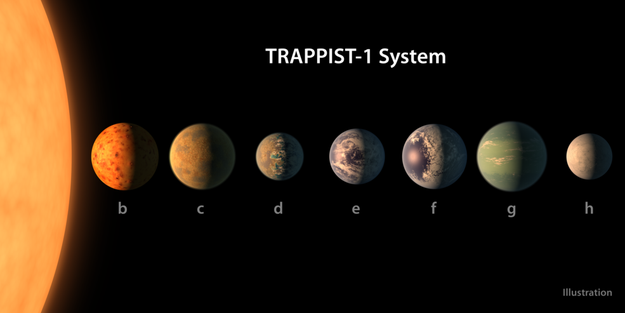[ad_1]
All of the planets may contain liquid water, and three of them are “firmly located” in the habitable zone, NASA announced Wednesday.

An artist's concept shows what each of the TRAPPIST-1 planets may look like.
NASA/JPL-Caltech
Seven Earth-sized planets with the potential to contain liquid water have been discovered orbiting a dwarf star, and three of them are “firmly located” in the habitable zone, NASA announced Wednesday.
The dwarf star, named Trappist-1, is about about 235 trillion miles from Earth — a relatively short distance for space — and is being heralded as a major step forward in the search for alien life.
“This discovery could be a significant piece in the puzzle of finding habitable environments, places that are conducive to life,” Thomas Zurbuchen, associate administrator of the agency’s Science Mission Directorate, said in a statement. “Answering the question ‘are we alone’ is a top science priority and finding so many planets like these for the first time in the habitable zone is a remarkable step forward toward that goal.”

This illustration shows the possible surface of TRAPPIST-1f.
NASA/JPL-Caltech
Using the Transiting Planets and Planetesimals Small Telescope (TRAPPIST) in Chile, researchers last year announced they had discovered three planets in the system. But using other telescopes, they were able to increase that number to seven, setting a new record for the number of “habitable-zone” planets found around a single star outside our solar system.
“I think that we have made a crucial step toward finding if there is life out there,” said Amaury H.M.J. Triaud, an astronomer at the University of Cambridge in England and a member of the international team researching Trappist-1, told the New York Times.
[ad_2]
